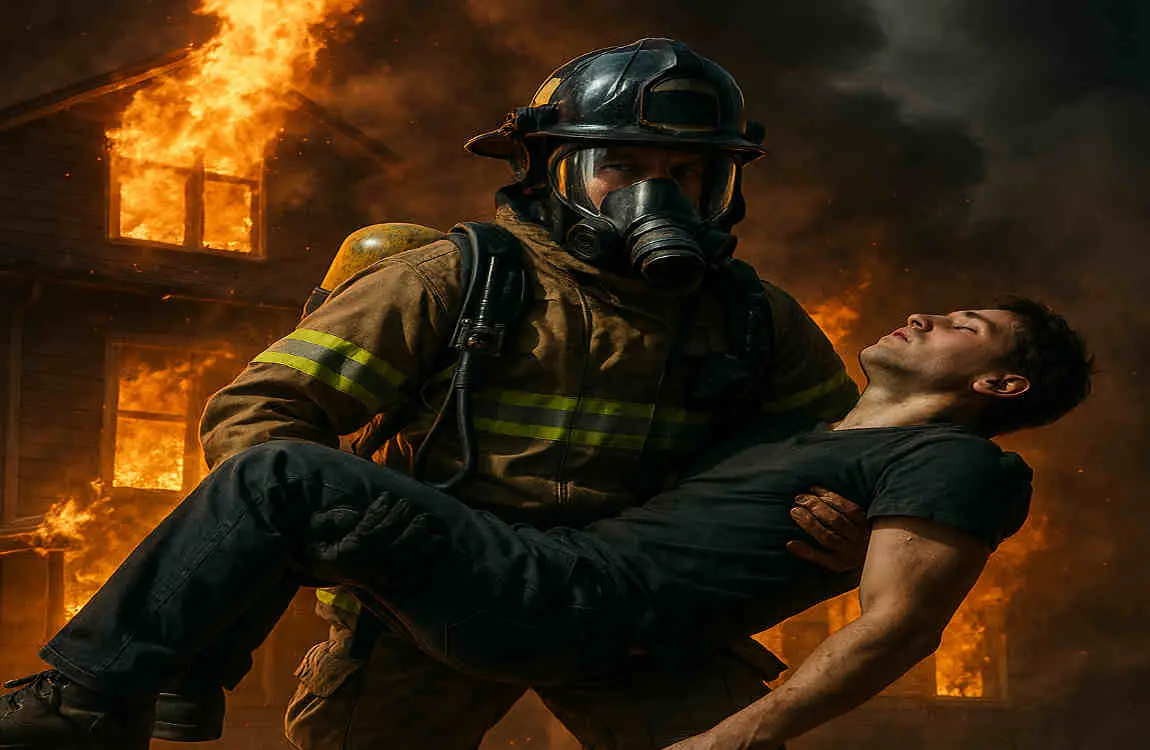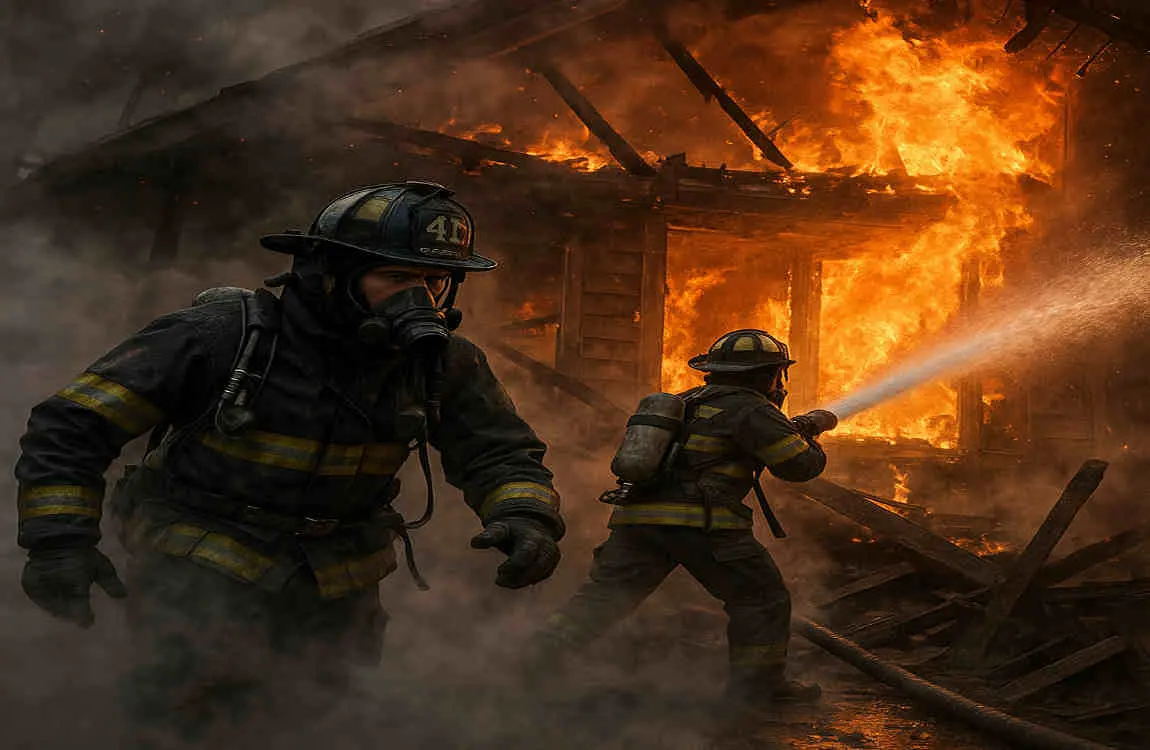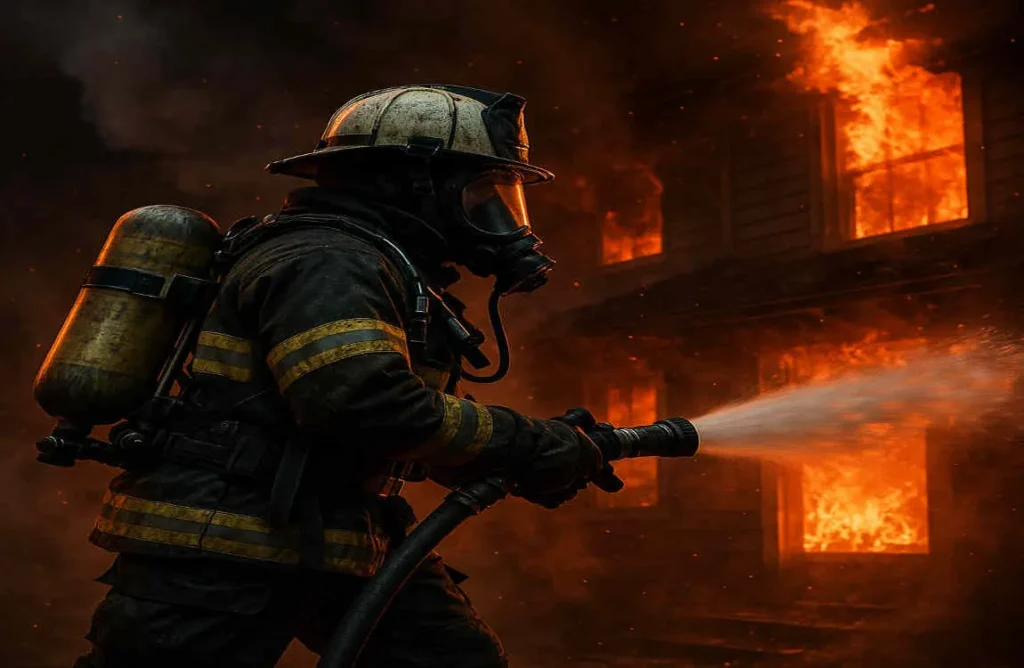House fires are devastating events that can cause immense harm to both people and property. In a matter of minutes, flames can engulf a home, creating hazardous situations for those inside. Quick, skilled intervention is crucial to mitigate these dangers and save lives. This is where the heroic efforts of firefighters come into play.
Firefighters are the first responders who bravely enter burning buildings, risking their lives to save others. Their training, tools, and techniques are essential in combating the chaos of a house fire. Understanding how these professionals operate during such emergencies can give us a greater appreciation for their role and the dangers they face.
Understanding House Fires: Causes and Dangers

Common Causes of House Fires
House fires can arise from various sources, each posing significant risks:
- Electrical faults: Faulty wiring or overloaded circuits can cause a fire to spark.
- Kitchen accidents: Cooking is one of the leading causes of house fires, often due to unattended stoves or flammable materials nearby.
- Heating equipment: Space heaters or poorly maintained fireplaces can ignite surrounding materials.
- Cigarettes: Discarded cigarettes can smolder and ignite flammable materials in homes.
How Fast and Deadly House Fires Can Spread
The speed at which a fire can spread is alarming. Within just minutes, a small flame can grow into a raging inferno, making quick action essential. According to the National Fire Protection Association (NFPA), a fire can double in size every 30 seconds in a confined space. This rapid expansion highlights the critical need for firefighters to act swiftly.
Immediate Dangers to Occupants
House fires pose several immediate dangers to those inside:
- Smoke inhalation: Smoke can be more dangerous than flames, as it can lead to unconsciousness or even death in just a few minutes.
- Burns: Direct contact with fire or hot surfaces can cause severe injuries.
- Structural collapse: The integrity of a house can deteriorate rapidly during a fire, leading to potentially hazardous collapses.
Statistics on Injuries and Fatalities
The urgency of fire safety is starkly highlighted by statistics. According to the NFPA, there are around 353,300 reported house fires each year in the United States, leading to approximately 2,620 civilian deaths. These numbers underscore the vital role firefighters play in saving lives during such emergencies.
The Role of the Fireman in House Fire Emergencies
Overview of a Firefighter’s Mission
You may also read (discover how an attic fan transforms home comfort).
Firefighters have a multi-faceted mission during house fire emergencies that includes:
- Saving lives: The primary goal is to rescue occupants who are trapped in hazardous situations.
- Protecting property: While saving lives is the priority, protecting property is also a crucial aspect of their work.
- Extinguishing the fire: Firemen work to control and extinguish the flames to prevent further damage.
Critical Skills and Training
To effectively handle house fires, firefighters undergo extensive training, which includes:
- Fire suppression techniques: Learning how to extinguish fires safely and efficiently.
- Rescue operations: Techniques for locating and rescuing individuals trapped inside.
- Medical training: Basic first aid and CPR to provide immediate care.
Assessing the Fire Scene
Upon arrival at the scene, firefighters quickly assess the situation. This includes identifying:
- The intensity and location of the fire.
- Potential hazards, such as explosions or structural weaknesses.
- The presence of trapped individuals.
Importance of Teamwork and Communication
Firefighting is a team effort. Firefighters rely heavily on communication and coordination to effectively execute their tasks. Each team member has a specific role, and clear communication ensures that everyone is aware of the situation and their responsibilities.
Life-Saving Techniques Used by Firemen in House Fires

Firefighters employ various techniques to save lives during house fires. Let’s delve into some of the most crucial methods.
Search and Rescue Operations
One of the primary responsibilities of firefighters is conducting search and rescue operations. This involves:
- Systematic search methods: Firemen use a grid pattern to ensure thorough searching of the premises.
- Thermal imaging cameras: These devices help locate victims through smoke and heat signatures.
- V.E.I.S. method: This technique stands for Vent, Enter, Isolate, Search. It allows firefighters to create a safer environment for rescue by venting smoke and heat before entering the area.
Ventilation Techniques
Proper ventilation is essential during a house fire. Firefighters ventilate buildings to:
- Reduce smoke: This improves visibility and air quality.
- Slow fire spread: By releasing heat, firefighters can more effectively control the fire.
Fire Suppression to Protect Lives
Fire suppression is another critical aspect of a firefighter’s role. Firefighters use:
- Water hoses: These are used to douse flames and cool down hot spots.
- Extinguishers: Portable extinguishers help control smaller fires.
- Fire retardants: These can be applied to slow down the spread of fire in critical areas.
Evacuation Assistance
Firefighters also assist in evacuating victims, which can be particularly important for individuals with mobility challenges. They ensure everyone exits the building safely, often carrying or guiding those who cannot escape on their own.
First Aid and Immediate Medical Care
Once victims are out of danger, firefighters often provide first aid. Their training allows them to administer:
- CPR: In case of cardiac arrest.
- Oxygen: For smoke inhalation victims.
- Burn care: Immediate treatment for burn injuries until paramedics arrive.
You may also read (what is an adverse condition in home real estate).
Tools and Equipment That Firemen Use to Save Lives
Firefighters are equipped with various tools and equipment that enhance their ability to save lives during house fires. Here are some of the most critical items:
Personal Protective Equipment (PPE)
Firefighters wear Personal Protective Equipment (PPE) to ensure safety while battling fires. This includes:
- Helmets: Protect against falling debris and heat.
- Self-Contained Breathing Apparatus (SCBA): Provides breathable air in smoky environments.
Rescue Tools
Firefighters utilize several rescue tools, such as:
- Axes and Halligan bars: Essential for breaking through doors and barriers.
- Ropes: Used for securing individuals or for climbing down from heights.
- Thermal imaging cameras: Help locate victims and assess fire intensity.
Communication Devices
Effective communication is vital for successful operations. Firefighters utilize devices such as two-way radios to coordinate efforts and exchange information about the scene.
Smoke Alarms and Fire Detection Equipment
Early detection can save lives. Firemen emphasize the importance of working smoke detectors and fire alarms in homes, as they significantly increase the chances of escaping a fire.
Training and Preparation Behind Firemen’s Life-Saving Abilities
Rigorous Physical and Mental Training
Firefighters undergo extensive physical and mental training to prepare for the demanding nature of their work. This training includes:
- Physical fitness: Maintaining strength and stamina for emergencies.
- Mental Resilience: Preparing for High-Pressure Situations.
Continuous Drills
Firefighters participate in continuous drills that simulate real-life scenarios. These drills cover:
- Search and rescue: Practicing techniques to find trapped victims.
- Fire suppression: Learning to extinguish fires in various conditions.
- Medical aid: Refreshing knowledge on first aid and emergency care.
Psychological Preparedness
The psychological aspect of firefighting is often overlooked. Firefighters are trained to handle the emotional challenges of witnessing trauma and loss. They develop coping strategies to maintain their mental health.
Importance of Scenario-Based Training
Scenario-based training is crucial for firefighters. By simulating house fires, they can practice their skills in a controlled environment, making them more effective when real emergencies arise.
Real-Life Stories of Firemen Saving Lives in House Fires
Heroic Tales of Bravery
Throughout history, countless stories have been told of firefighters putting their lives on the line to save others. Here are a couple of compelling anecdotes that highlight their bravery:
- The Family Rescue: In 2022, a fire broke out in a two-story home while a family was sleeping. Firefighters arrived to find heavy smoke billowing from the windows. They quickly entered the home, using thermal imaging to locate the family trapped on the second floor. Within minutes, they had rescued all four members, who would have otherwise succumbed to smoke inhalation. This incident perfectly illustrates how a fireman’s house saved a life through quick action and teamwork.
- The Elderly Woman: In another instance, a fire erupted in a senior living facility. Firefighters were able to evacuate over twenty residents, including an older woman who used a wheelchair. The team worked together, employing both physical strength and compassion, ensuring she was safely transported to safety. This rescue highlighted the dedication and skill of firefighters in protecting vulnerable community members.
How Fire Prevention and Community Awareness Help Firemen Save Lives
Role of Fire Prevention Education
Fire prevention education is essential in reducing the occurrence of house fires. Firefighters often engage with communities to provide:
- Workshops on fire safety.
- Demonstrations of proper evacuation techniques.
Importance of Working Smoke Detectors
A working smoke detector can significantly increase the chances of survival in the event of a fire. Firemen emphasize the need for:
- Regular testing of smoke alarms.
- Replace batteries at least once a year.
Community Cooperation
Community cooperation is vital for effective fire response. Firefighters rely on residents to:
- Report fires quickly.
- Participate in fire drills to familiarize themselves with evacuation routes.
Fireman’s Role in Public Education
Firefighters aren’t just responders; they are also educators. They play a crucial role in teaching the public about fire safety, emphasizing the importance of preparedness and prevention.
You may also read (what are the best methods to view my house from above).

